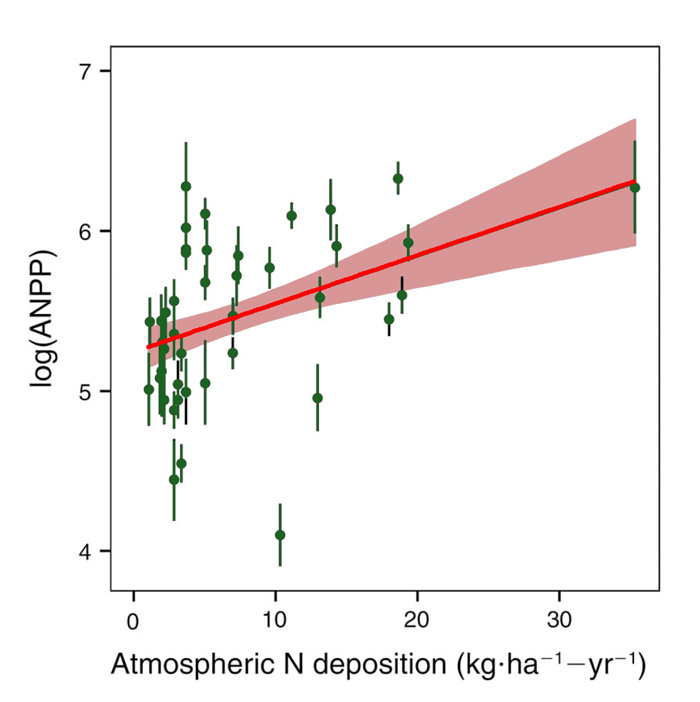| Tweet | Follow @co2science |
Paper Reviewed
Stevens, C.J., Lind, E.M., Hautier, Y., Harpole, W.S., Borer, E.T., Hobbie, S., Seabloom, E.W., Ladwig, L., Bakker, J.D., Chu, C., Collins, S., Davies, K.F., Firn, J., Hillebrand, H., La Pierre, K.J., MacDougall, A., Melbourne, B., McCulley, R.L., Morgan, J., Orrock, J.L., Prober, S.M., Risch, A.C., Schuetz, M. and Wragg, P.D. 2015. Anthropogenic nitrogen deposition predicts local grassland primary production worldwide. Ecology 96: 1459-1465.
Introducing their analysis, Stevens et al. (2015) write that "humans dominate many important Earth system processes including the nitrogen (N) cycle," noting that "both modelling and experimentation have suggested a role for anthropogenically altered N deposition in increasing productivity." And, therefore, they go on to employ an international multiscale data set derived from biomass production on 42 sites of herbaceous vegetation growing on four different continents, in order to demonstrate that atmospheric N deposition is indeed positively correlated with aboveground net primary production (ANPP) across a wide range of herbaceous plant ecosystems.
This work demonstrated, as the 24 researchers from around the world report, that "N deposition was a better predictor than climatic drivers and local soil conditions, explaining 16% of observed variation in ANPP globally with an increase of 1 kg N/hectare/year increasing ANPP by 3%" (see figure below), while "climatic drivers showed no significant relationship." And so they conclude -- and rightly so -- that "in herbaceous systems across the world, humans appear to be partially driving local ANPP through impacts on the N cycle."

Aboveground net primary production (ANPP), measured in g/m2), shown in relation to site-level atmospheric N deposition. Adapted from Figure 3 of Stevens et al. (2015).
Unfortunately, however, Stevens et al. additionally report that "N deposition is not currently included in the majority of Earth system models used by the IPCC," citing Ciais et al. (2013), especially, as they note, "given the high global cover of grassland biomes." And so it is that they conclude their paper with the important advice that "primary production due to N deposition rates should be explicitly included in future global change models.
Reference
Ciais, et al. 2013. Carbon and other biogeochemical cycles. In: Stocker, T.F., Qin, D., Plattner, G.-K., Tignor, M., Allen, S.K., Boschung, J., Nauels, A., Xia, Y., Bex, V. and Midgley, P.M. Eds. Climate Change 2013: The Physical Science Basis. Contribution of Working Group I to the Fifth Assessment Report of the Intergovernmental Panel on Climate Change. Cambridge University Press, Cambridge, United Kingdom.




